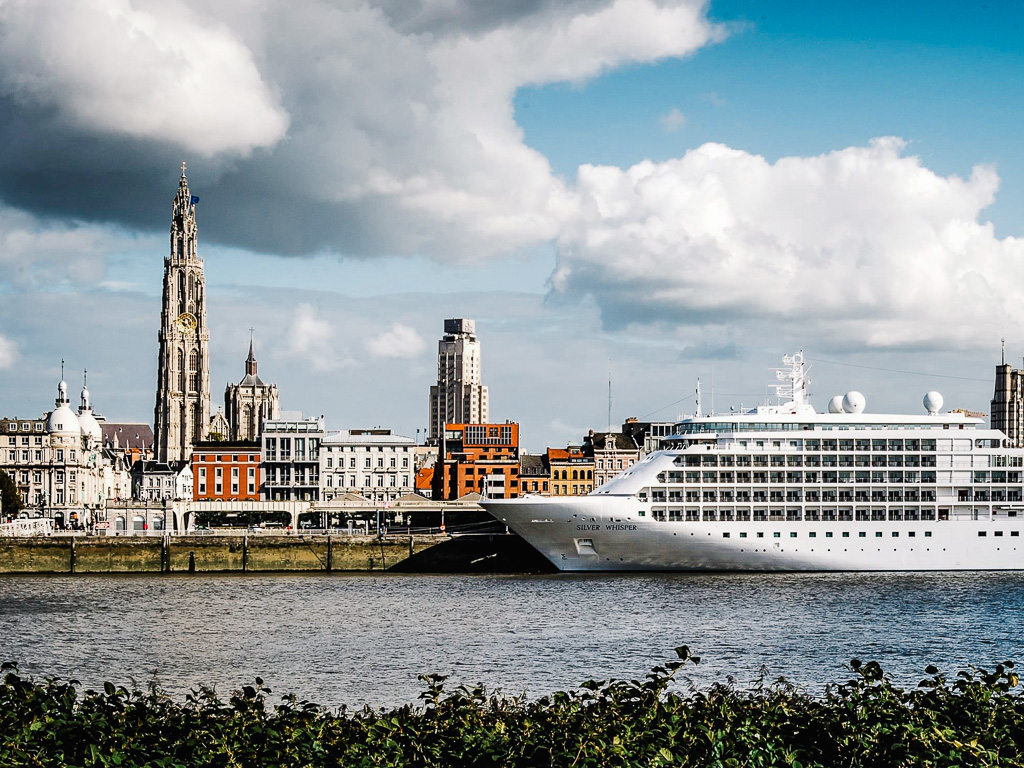2020 Special Mention — Antwerp
Antwerp is recognised for its careful and deliberate development of strategic projects over the long term to rejuvenate the city.1
 The Antwerp city centre © stad Antwerpen
The Antwerp city centre © stad Antwerpen
ANTWERP is recognised for its careful and deliberate development of systematic plans and projects to rejuvenate the city, through a combination of large-scale and small-scale interventions over the long term. The lack of coordination in the post-war development of Antwerp and the northward expansion of its port had resulted in disused and neglected areas, particularly along the Scheldt River.
The Strategic Spatial Plan approved in 2006 catalysed the reversal of these conditions by introducing the strategy of Renovatio Urbis within the context of the region – renewal of the city through strategic interventions to tackle issues of climate change, affordable housing and living environments, urban mobility, and to strengthen the green and blue infrastructure.
Most significantly, the revitalisation of the quays along the River Scheldt has enabled conservation of selected historic heritage, mitigated flood risks, and reconnected the city with the river through new high-quality public spaces for all to enjoy. The climate-neutral Blue Gate project is another major initiative with great potential.
Surgical insertions in urban fabric
Through the Urban Renewal Housing Programme, sites deemed unattractive by private developers are taken over by AG VESPA – an autonomous public developer – and converted into good quality affordable housing. Emphasis is placed on spatial quality and planning processes are supported by design research conducted by a dedicated team under the guidance of the City Architect. These small, surgical insertions in the urban fabric are laudable for seeding efforts to redevelop and revive neglected neighbourhoods.
Addressing congestion
To address congestion, the city launched the ‘Smart Ways to Antwerp’ programme to promote multi-modal travel, well integrated to serve new developments. Antwerp also took a bold step of embarking on the ambitious Over the Ring project, to cover a congested ring road to better integrate two parts of the city and provide more green space. To overcome public concerns over potential dis-amenities of this massive project, Antwerp embarked on the most ambitious citizen participation experiment in Belgium to date.
The city appointed an independent curator and design team to work with citizen groups to come up with implementable concepts, through an extensive series of workshops, exhibitions and tours, thus turning a confrontational situation into a long-term collaboration with citizens. It will be interesting to follow the progress of the project over the years ahead. The people-centric approach continues in Antwerp’s efforts to integrate migrants by helping them gain the necessary skills to fit into the larger community.
Slow urbanism
Antwerp has demonstrated that there are merits to a ‘Slow Urbanism’ development approach – the flexibility to adapt and respond to new challenges, gain public support for long-term objectives, and grow the city in an organic way. The breadth and depth of ongoing interventions are highly impressive and poised for success.
The sense of cooperation that transcends all levels from citizens to city administration sends a strong signal that solutions can gain widespread acceptance if governments are willing to work with citizens to co-create solutions. Antwerp’s achievements thus far carry significant lessons for many cities tackling the complex challenge of integrating historical infrastructure with modern city planning. O
Case studies
| 01 | Scheldt Quays A project that revitalised historic spaces and reconnected the city with the River Scheldt, focusing on community engagement and sustainability. |
-
All information correct as of 2019. ↩

